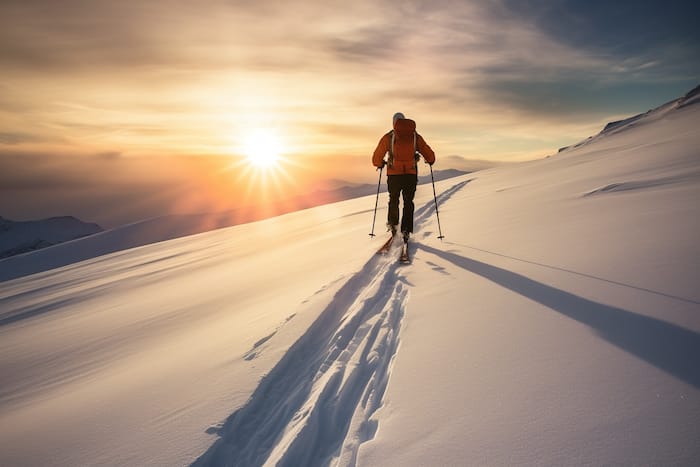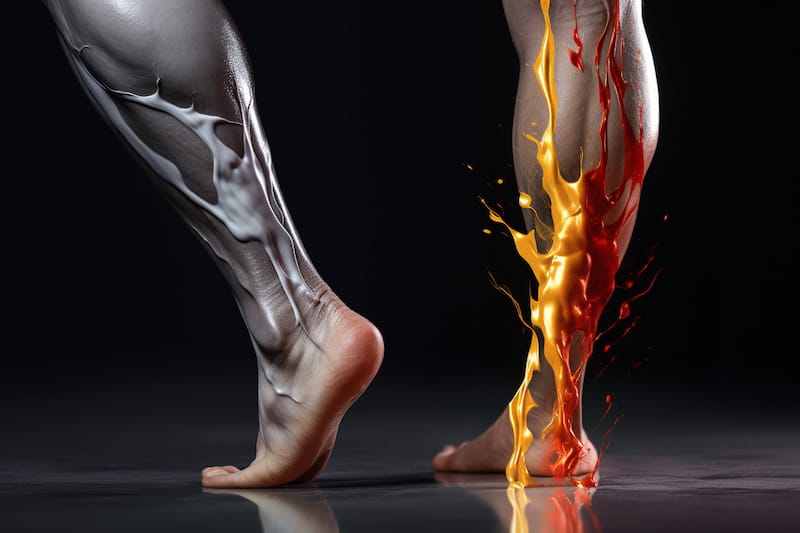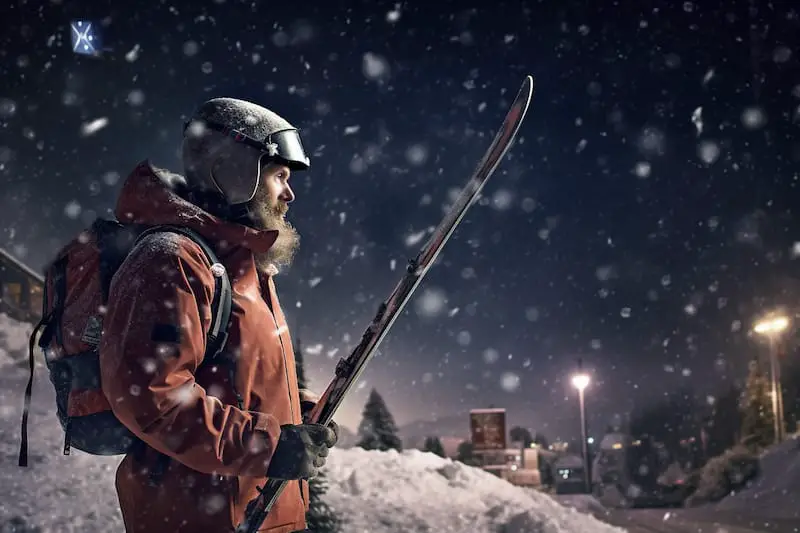In addition to being a great recreational activity, cross country skiing is a sport that not everyone gets to experience. Winter sports require a certain climate and terrain to be successfully played. However, if one does get the chance to be involved in cross country skiing, they had better be sure that they pick the right skis before doing so.
Since everyone has different plans for skiing, they’ll need to find the right pair of skis. However, the right skier can find tremendous use with backcountry skis while cross country skiing.
If you’re unsure of what you or your party intends to do while skiing, finding the right equipment can be difficult. Getting a basic idea of what’s best for different routes can make you feel more at ease. Read on to better understand cross country skiing and whether or not you’ll need backcountry skis or another pair.
What Is Cross Country Skiing?
Cross country skiing is a form of skiing in which someone travels the entire time while on skis. This includes moving uphill and can take skiers on a variety of terrains as they move across the land. Cross country skiing is a great physical challenge that encourages exploration and adventure. Here are the different styles of cross country skiing:
- Touring: by going through different terrains on both groomed trails and off-trail areas, this style is best for those looking to explore,
- Backcountry: this is similar to touring but involves steeper hills to climb and ski on. Backcountry skis sometimes have detachable climbing skins to help you face the challenge,
- Classic: a fairly simple style that involves a parallel gliding technique to ski,
- Skate: only done on groomed trails; this involves a more difficult V-shaped technique but can lead to greater speeds.
Since cross country skiing has different styles and room for preference, different kinds of equipment can be found to suit a skier’s needs.
How To Pick The Right Skis
Whether you’re looking for a certain type of cross country skiing or are still deciding, it’d be best that you know about your options before you purchase anything. For width, you should consider the following:
- Narrow skis (95 mm or less at the waist): best for long distances, as well as ascending uphill. Work well on firm snow and glaciers but do not float well on deep snow
- Wider (95-105 mm): a versatile middle ground that makes for easy trail breaking and allows the user to stay afloat in soft snow
- Widest (105 mm or more): the largest surface area allows for better floatation, even atop deep snow, and easy trail breaking. Cons are they allow less maneuverability and add extra weight when climbing
Choosing ski length is not decided by one factor but by multiple. Height and preferred ski style (longer for speed and shorter for maneuverability) are the main concerns, though. Trying out different lengths, if you can, will help, as will going into a store and getting assistance from a sales associate.
Another detail you’ll have to decide on is the profile of your skis, which are either:
- Cambered: this shape goes up at the tips and curves up in the middle, which flattens under the weight of the skier. This provides better stability for turning
- Rockered: this shape is flat in the middle and has tips that curve much more and earlier than in the cambered. This provides better floatation and maneuverability
These differences are good to personalize your skiing experience to your liking, even if you are trying to go for a certain type of ski. As you think about these details, you’ll also have to look for specific types to fit your skiing plans.
Go to Amazon and check out these cross country skis!
Different Types of Skis
As you prepare your skiing plans and know what type of terrain and path you’ll be taking, you’ll have to decide on which type of ski you’ll be using. For the purposes of cross country skiing, you’ll want to look at the following:
- Classic Cross Country Skis: designed to fit well into groomed tracks and ski in a straight line. Has these qualities:
- No sidecut
- Double-cambered profile
- Waxed/scaled zone in the middle (provides grip against snow when weight is added)
- Skate Skis: built for skiers to reach top speeds through the use of groomed trails and well-packed snow. Has these qualities:
- Typically shorter and lighter than others
- No kick wax or scales, but needs glide wax for top performance
- Single camber profile that is longer and less pronounced
- Backcountry Cross Country Skis: designed to meet the challenges of off-trail routes by enhancing stability and control for the skier. Has these qualities:
- Short, wide, and heavy
- Moderate sidecut
- Full/partial metal edges
- Single camber profile
- Wax is optionable and based on preference
When To Pick A Backcountry Ski
Now that we’ve covered cross country skiing and the various options for skis, it’s clear that getting backcountry skis are valid for such an activity. However, if you are going to go with them, make sure you are doing it for the right reasons.
The heavy weight of the ski may make you feel safe, but a ski of this size won’t work as well on a groomed trail with tracks. You’ll have to go off-trail to get the most out of your backcountry skis. Otherwise, you’d be better off getting another set of skis.
Can you use cross country skis for downhill skiing?
Final Thoughts
When you’ve got the chance to go skiing, you’ll want to make sure you do it right and carefully, especially if you don’t get many chances. Just as you need to bring the right people on the right day, you’ll have to get yourself set up with the right equipment. In the case of cross country skiing, you have a couple of options to choose from.
Ultimately, if you are going off-trail, you’ll want to get yourself backcountry skis to fit the occasion. By providing you the proper stability and floatation that you won’t need on the groomed trails, the backcountry ski allows you to navigate those routes you may not be so sure about going down.


